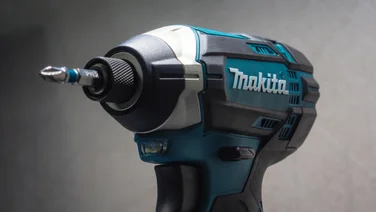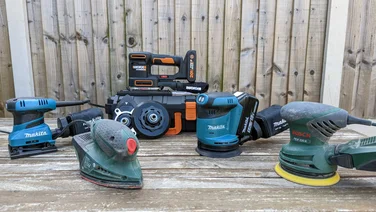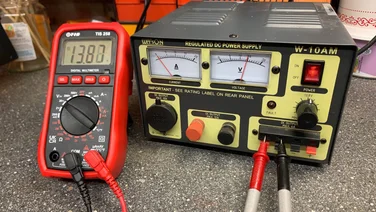To help us provide you with free impartial advice, we may earn a commission if you buy through links on our site. Learn more

If you’ve started to notice little black dots or fuzzy black, white or green patches appearing in your home, you could have mould. And while cleaning mould may not be the most pleasant or exciting of tasks, it’s important to tackle the issue before it spreads any further.
As well as being unsightly, mould can also harm our health. But if you’ve ever wondered how to remove mould from painted walls, you’re not the only one. While you’ll no doubt be keen to scrub away the offending patches, it’s important to ensure that you don’t damage the paint when you do so. So, here’s how to remove mould from painted walls safely and effectively.
How to remove mould from painted walls: A step-by-step guide
1. Assess the possible cause of the mould
A variety of different issues can cause mould. The most common is excess moisture and condensation. So, for example, if you’ve just had a long shower or been cooking in the kitchen, you may have noticed that the windows or mirrors have steamed up. This is a clear warning that there’s too much moisture in the air, which can lead to mould growth. However, if this is the root cause of your mould, there are a couple of quick and easy fixes that will help. From fitting an extractor fan, either in your kitchen or bathroom, to opening windows and doors or using a dehumidifier, ventilation is key.
But there are a few more serious reasons that you could have mould in your home. You could have a leak in your pipes, roof or ceiling, for example, which will take some additional investigation and require repairs to stop the mould from recurring. Whatever the root cause, you don’t want to go to the bother of cleaning the mould only for it to return because you didn’t discover the reason behind it.
READ NEXT: Best silicone sealant
2. Wear protective clothing and materials
Once you’ve established the cause of the mould, it’s time to start cleaning. It’s important to wear gloves and a mask when cleaning mould because disturbing it can release spores and other chemicals into the air that you certainly don’t want to be breathing in.

Depending on where the patch of mould is, you may want to cover nearby furniture and carpets to limit any disturbed mould spores from landing on them and spreading the problem further. We recommend opening a window or door to keep the space well ventilated while you work.
READ NEXT: Best window cleaner
3. Try one of the following DIY cleaning solutions
While you can purchase a dedicated anti-mould spray, it can be much more cost-effective and convenient to create a DIY solution. You probably already have all of the ingredients in your kitchen cupboards.
With all of these cleaning methods, it’s crucial to remove any excess moisture left behind by taking a dry rag or sponge to the affected area afterwards. Failing to do so, and leaving behind a damp environment, could restart the mould cycle.
White vinegar
Spray some undiluted white vinegar onto the mould on your painted wall and leave it for at least an hour. Then rinse the area and dry it with a clean cloth.
Hydrogen peroxide
You can use hydrogen peroxide in the same way as vinegar on this occasion. If you don’t have a bottle at home, you can purchase it from Boots or Amazon.

Baking soda
Baking soda is one of the most versatile natural cleaning products. Not only does it absorb moisture and disinfect an area, but it also kills some types of mould spores. Create a paste by mixing baking soda with water and applying it to the affected area. Allow it to dry, then carefully rinse and remove it.
Soap and water
A simple soap and water solution can also remove mould from painted walls. Using either washing-up liquid or a mild soap detergent, fill a bowl or bucket of water. Then take a sponge or rag and dip it into the soapy water before carefully wiping the mould off of the wall. Try not to brush or vigorously rub the mould because this can release spores into the air.
Using bleach to remove mould is not recommended because it can strip your walls of paint and only appears to have removed the mould. Bleach won’t actually kill the mould spores, which means that it could grow back again.
READ NEXT: Best paint for walls
How to prevent mould from occurring again in the future
Prevention is the best defence against mould. As mould tends to grow best in damp, dark and poorly ventilated areas, ventilation is key.
To stop mould from growing in your bathroom or kitchen in the first place, ensure that you keep windows open to increase circulation. Switching on an extractor fan before you hop in for a shower or start cooking can also stop excess moisture from getting trapped inside the room.
If you dry your clothes indoors, this can also cause moisture to build up. Again, something as simple as opening a window or using a dehumidifier can help keep the air flowing around your home.






